ELAR 1.9
Multiple genres: listening, speaking, reading, writing, and thinking using multiple texts--genres. The student recognizes and analyzes genre-specific characteristics, structures, and purposes within and across increasingly complex traditional, contemporary, classical, and diverse texts. The student is expected to:
- (1) demonstrate knowledge of
distinguishing characteristics of well-known children's
literature such as folktales, fables, fairy tales, and nursery rhymes;
- (A) discuss rhyme, rhythm, repetition, and alliteration in a variety of poems;
- (B) discuss elements of drama such as characters and setting;
- (C) recognize characteristics and structures of informational text, including:
- (D) the central idea and supporting
evidence with adult assistance;
- (i) features and simple graphics to locate or gain information; and
- (ii) organizational patterns such as chronological order and description with adult assistance;
- (iii) recognize characteristics of persuasive text with adult assistance and state what the author is trying to persuade the reader to think or do; and
- (E) recognize characteristics of multimodal and digital texts.
- Plus Plan

Little Miss Muffet – Nursery Rhyme Poster and PowerPoint
Use this “Little Miss Muffet” nursery rhyme poster to teach your youngest students the features of rhymes.
- Free Plan
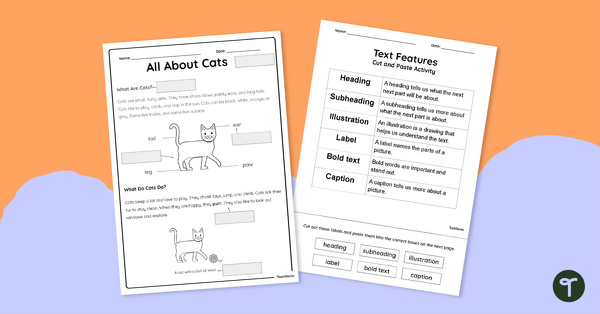
Sorting Text Features Cut and Paste
Build confidence and comprehension with this ready-to-use Text Features Cut and Paste Worksheet!
- Plus Plan

Hickory Dickory Dock – Nursery Rhyme Poster and PowerPoint
Use this “Hickory Dickory Dock” nursery rhyme poster and PowerPoint to teach your youngest students about rhyme, rhythm and counting.
- Plus Plan

Jack Be Nimble – Nursery Rhyme Poster and PowerPoint
Use this “Jack be Nimble” nursery rhyme poster and PowerPoint to teach your youngest students about rhyme and rhythm.
- Plus Plan

Row, Row, Row Your Boat – Nursery Rhyme Poster and PowerPoint
Use this “Row Row Row Your Boat” nursery rhyme poster and PowerPoint to teach your youngest students about rhyme and rhythm.
- Plus Plan
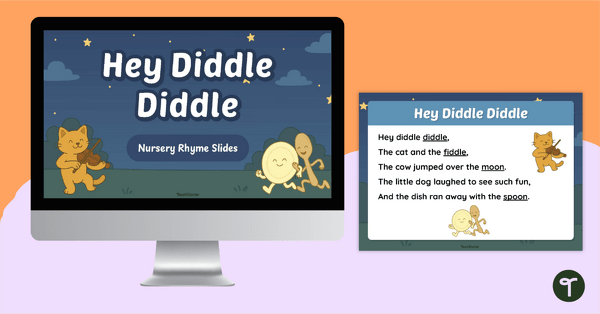
Hey Diddle Diddle – Nursery Rhyme Poster and PowerPoint
Use this “Hey Diddle Diddle” nursery rhyme poster and PowerPoint to teach your youngest students about rhyme and rhythm.
- Plus Plan
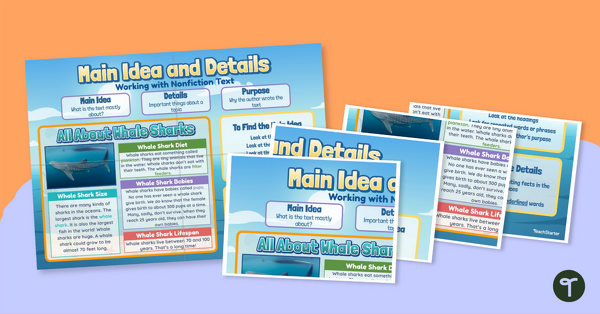
Main Idea and Details Anchor Chart
Print a main idea anchor chart for primary grades to build skills in identifying main idea and details in nonfiction texts.
- Plus Plan

I Think Mice Are Rather Nice – Nursery Rhyme Poster and PowerPoint
Use this “I Think Mice Are Rather Nice” nursery rhyme poster and PowerPoint to teach your youngest students about rhyme and rhythm.
- Plus Plan

Nonfiction Scavenger Hunt – Mini Book Activity
Explore non-fiction text features with this Nonfiction Scavenger Hunt activity - the perfect mix of hands-on learning and foundational literacy skills.
- Plus Plan
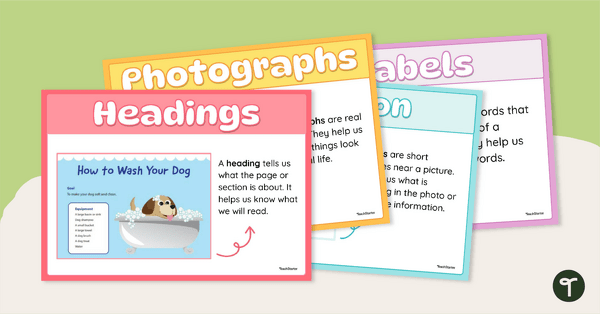
Non-Fiction Text Features Poster Set
Build your students’ confidence in navigating informational texts with this engaging Text Features of a Non-Fiction Book Poster Set.
- Plus Plan

All About Smoke Alarms - Mini Book
Teach your students the importance of fire alarms with a printable Seymour Smoke Alarm Mini Book!
- Plus Plan

The Easter Bunny – Easter Poem Poster
Use this Easter poem about the Easter bunny as a basis for some Easter fun in your classroom!
- Plus Plan

A Visit from Santa – Christmas Poem Poster
Use this “A Visit from Santa” Christmas poem for kids as a basis for some festive fun in your classroom!
- Plus Plan
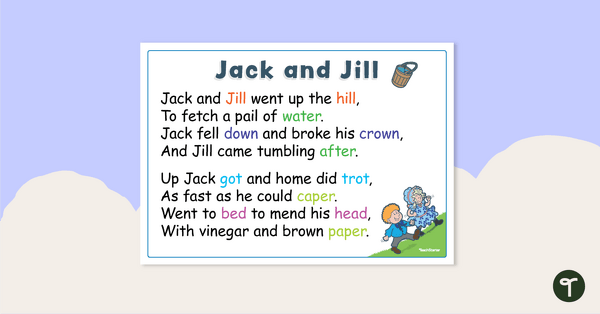
Jack and Jill – Nursery Rhyme Poster
Use this “Jack and Jill” nursery rhyme poster to teach your youngest students about rhyme and rhythm.
- Plus Plan

Wee Willie Winkie – Nursery Rhyme Poster
Use this “Wee Willie Winkie” nursery rhyme poster to teach your youngest students about rhyme and rhythm.
- Plus Plan

Here Comes the Band – Counting Rhyme Poster
Use the counting rhyme “Here Comes the Band” poster to teach your students about numbers and rhyme simultaneously!
- Plus Plan

Fiction vs Nonfiction Teaching Slides
Teach your students the difference between fiction and nonfiction books with this age-appropriate teaching presentation for elementary school ELA lessons.
- Plus Plan

Describing Community Helpers - Fireman Worksheets
Get students exploring descriptive adjectives with these printable Community Helpers Fireman worksheets, perfect for Early Grades learning.
- Plus Plan

Grade 1 Magazine - What's Buzzing? (Issue 1)
A beautifully designed, 24-page reading magazine specifically written for Grade 1 students.
- Plus Plan

Main Idea Exit Tickets
Check for understanding of the main idea and supporting detail with these exit tickets.
- Plus Plan

Main Idea and Details in Nonfiction Text — Instructional Slide Deck
Build skills in identifying main idea and details in nonfiction texts with an instructional slide deck for primary grades.
- Plus Plan

Fun With Nonfiction Task Cards
Solidify your nonfiction reading response lessons with this set of 12 comprehension task cards.
- Plus Plan

The Science Behind Shaping Pretzels – Worksheet
An activity for students to practice procedure and sequence.
- Plus Plan

The Science Behind Shaping Pretzels – Poster
A poster illustrating the procedure about how to make a pretzel.
- Plus Plan
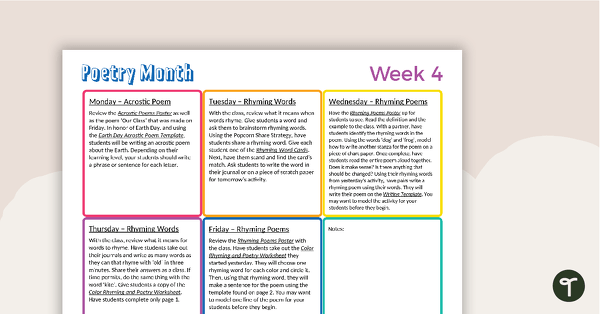
Primary Weekly Poetry Guide - Weeks 4 and 5
Use this weekly poetry guide to celebrate National Poetry Month in your primary classroom.
- Plus Plan

Ladybug Beats Poem - Simple Rhyming Poetry Poster
A simple rhyming poem to develop vocabulary, reading, speaking, and listening in the early years.
- Plus Plan

Tale of a Whale - Simple Rhyming Poetry Poster
A simple rhyming poem that is perfect to explore phonics and rhyming words in the early years.
- Plus Plan

Primary Weekly Poetry Guide - Week 3
Use this weekly poetry guide to celebrate National Poetry Month in your primary classroom.
- Plus Plan

The Robot Chant – Worksheet
A worksheet paired with a rhyming chant about robots.
- Plus Plan

Primary Weekly Poetry Guide - Week 2
Use this weekly poetry guide to celebrate National Poetry Month in your primary classroom.
- Plus Plan

Alliteration Poster For Young Students
A poster to use with young students when teaching alliteration.
- Plus Plan

Storytelling Finger Puppets Template
A set of 15 finger puppets that can be used to spark the imagination for creative writing or to perform puppet shows.